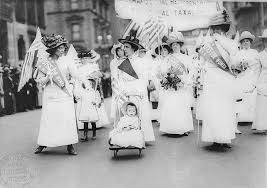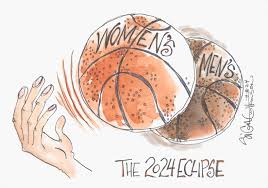1
Section One: The Fundamentals
A) What do we know about sport? What are common assumptions we make about sport and society?
| “Sports promote teamwork and unity” is an ideal that is not always true. Although I have personally had great experiences within the team sports that I have played, I am still able to recognize that this is not always the case for everyone. For example, many people gain an understandably competitive side when engaging in sports due to the desire to achieve success. The issue with this is that this may cause athletes to prioritize themselves over their teammates, hindering their success as a group. I saw this a lot during my brother’s hockey games, when certain players would fail to pass the puck in hopes that they could show off their skills, ultimately affecting the team negatively. There is also the case of favouritism leading to unequal playing opportunities. This is prevalent when a coach has a child on their team, allowing them more play time which almost never goes over well with the rest of the team. These are both prime examples of how a lack of equality and mutual respect can lead to teamwork and unity being hindered within team sports. |
Exercise 3: Notebook prompt
What are some other metanarratives about sport that you are familiar with? Find an image or video clip or draw something yourself that captures this idea…
So what? Why does any of this matter? Does it matter? As something we grow up with – live with – play through – we don’t often interrogate the meanings of sport, and perhaps we don’t want to.
But being aware of these assumptions and metanarratives is especially important, I would argue, because of the centrality of sport to our everyday lives, the role that sport plays in shaping our childhood and worldviews and….. [finish that thought]
| how we engage with sport on a social and individual level. Metanarratives affect the sports world on all levels, meaning they can influence viewers, athletes, and corporations. For example, the ‘Gladiator’ narrative may affect the way athletes treat their injuries, many may ignore pain to keep up with an expected toughness in leagues such as the NHL and NFL. This mindset can seriously harm athletes’ long-term health, all because they aim to do what is expected of them. On a more positive note, sports are also intertwined with political activism which can benefit the advancement of social change. A prime example is that of Colin Kaepernick when he kneeled during the national anthem in protest of racial injustice. His courageous acts sparked mass conversation which continues to be had today.
|
B) What is social justice?
Exercise 4: Padlet Prompt
Think back to the last section and try to look at some of the ideas we discussed differently. How might sport and social justice actually co-exist?
Record any images, video clips, or gifs you added to the padlet and identify a point of intersection between sport and social justice (can be an issue or a barrier or a debate or something you would like to explore in more depth in this course) . Screenshot or paste in your response below.
| The first thing that came to mind when thinking about the intersectionality of sports and social justice on the basis of access and opportunity was the hardships faced amongst the transgender community. Many legislations have been put in place throughout North America that restrict trans athletes from competing in categories that align with their gender identity. These laws and bans are harmful rules that impede on the human rights of trans athletes, often being based on ‘unfair disadvantages’ that truly stem from transphobia. It’s crucial that this issue is further looked into in order to harness equality moving forward. This can be done by creating inclusive policies, better education on the topic, and ensured safety for trans athletes.
|
C) Social Justice Reading
(note: this activity is optional!)
D) KINESIOLOGY AND SOCIAL JUSTICE
Exercise 5:
Exercise 6:
What are the implications of bodies-at-risk discourse and the refusal to understand the health gap from a social justice perspective, according to the authors of this article?
|
Throughout the article, the authors discuss the various views that the bodies-at-risk discourse hold. For example, they typically blame marginalized groups, reinforce whiteness, and obscure structural inequalities. The article highlights how the bodies-at-risk discourse tends to blame marginalized groups such as women, people with disabilities, people in poverty, as well as ethnic minorities for their health issues, acting as though it is their fault. The authors also share how public health is typically overpowered by white middle-upper men, creating a biased narrative surrounding one’s health (238). Minority groups are being labelled as being at risk for being unhealthy compared to the average white person under healthism contexts, this puts whiteness as being the ‘norm’ or the accepted body (229). These discourses create harmful labels for said groups, framing minority groups as being lazy and lacking the self-discipline to stay in shape (229). According to the authors, the inability to use a social justice perspective fails to address these issues while perpetuating the systemic inequalities based on health disparities. Overall, their call to change is for refined research to be done that focuses on all groups to promote effective public health.
|
Section Two: Sport Feminism
Exercise 7: Notebook Prompt
What is feminism? What does it mean to you? Choose one of the images below and explain how it captures your understanding of feminism (or find one that does speak to you and paste this into your pressbook with an explanation of why it matters to you.
This photo stood out to me and captured my understanding of feminism as it represents fighting for equality and a voice in society. With this, it’s also an early depiction of one of the first moments where feminism was displayed publicly amongst women, fighting for the right to vote. These women fearlessly challenged societal norms, sexism, and misogyny during a time when women were excluded. This is important to me because it shows young women/girls that collective action does work and that wo men have powerful voices, which is sadly a message that still needs spreading in current societies. Feminism is still heavily relevant today because there continues to be ongoing challenges surrounding gender inequality in various places around the globe. With this, I also acknowledge that many women were excluded from the suffragette movement that is displayed in thephoto. Women of colour, migrant women, and working-class women were not granted the same opportunities during this time and the exclusion of these women shows the importance of intersectional feminism which addresses gender equality based on race, class, and other marginalized communities. men have powerful voices, which is sadly a message that still needs spreading in current societies. Feminism is still heavily relevant today because there continues to be ongoing challenges surrounding gender inequality in various places around the globe. With this, I also acknowledge that many women were excluded from the suffragette movement that is displayed in thephoto. Women of colour, migrant women, and working-class women were not granted the same opportunities during this time and the exclusion of these women shows the importance of intersectional feminism which addresses gender equality based on race, class, and other marginalized communities.
|
Exercise 8: Notes Prompt (optional)
NB: Cornell notes is a great resource that teaches effective notetaking. Unfortunately, our system can’t save notes taken in the H5P app, so this is fully optional.
Exercise 9: Crossword Activity
Exercise 10: Padlet Prompt
IntersectionalityI chose the word ‘Intersectionality’ because it explains how women experience forms of discrimination in different ways. This is relevant to feminism in sports as it can highlight the various ways in which marginalized groups can endure inequalities.
|

| I believe that the newfound appreciation for women’s sports, (specifically basketball), is a trend. I wish it weren’t but it seems as though only a certain amount of female athletes are gaining male fans not based on their ability as an athlete but their abilities as a female athlete. Many are failing to appreciate their talents without comparing them to men.
|

